Isn’t it kind of funny how we tend to think that our furry pals are set in stone and won’t change?
I mean, sure, they will grow, maybe grow a bit bigger with more mature features, but we don’t expect them to change colours, do we?
Well, allow me to introduce Buster – a very handsome canine who crushed all expectations by undergoing a very magical and unexpected makeover.
Good Boy, Buster
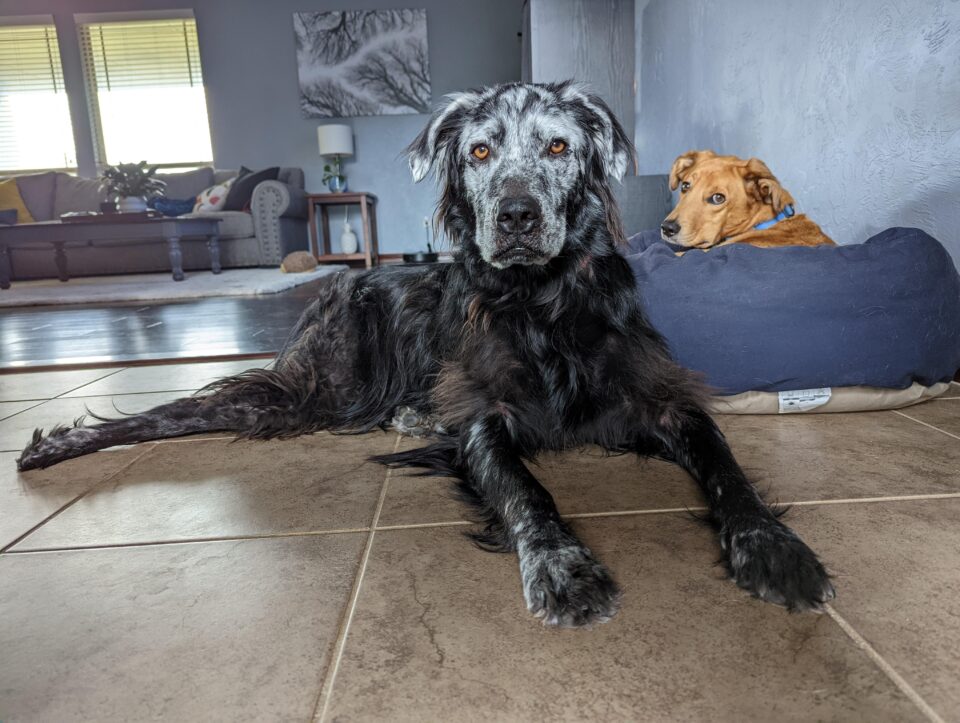
When Buster first became part of his family, he was just your typical, cheerful pup, spreading joy with his irresistible charm and glossy, coal-black coat.
However, over time, his fur started turning white!
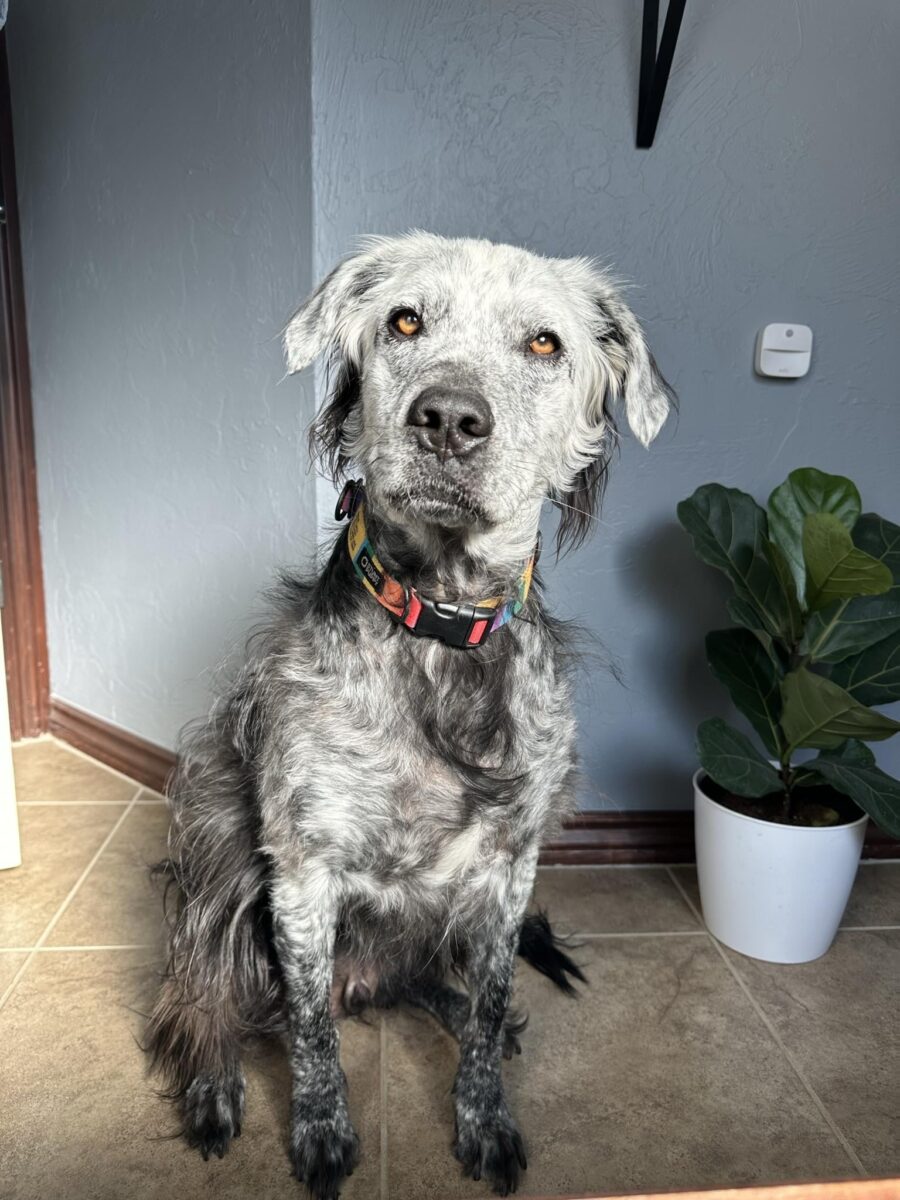
According to his hooman, Buster’s white hairs initially started to kick in around his face, gradually spreading across the rest of his body.
And, in a span of 2.5 years, Buster’s once jet-black fur blossomed into a stunning milky white coat!
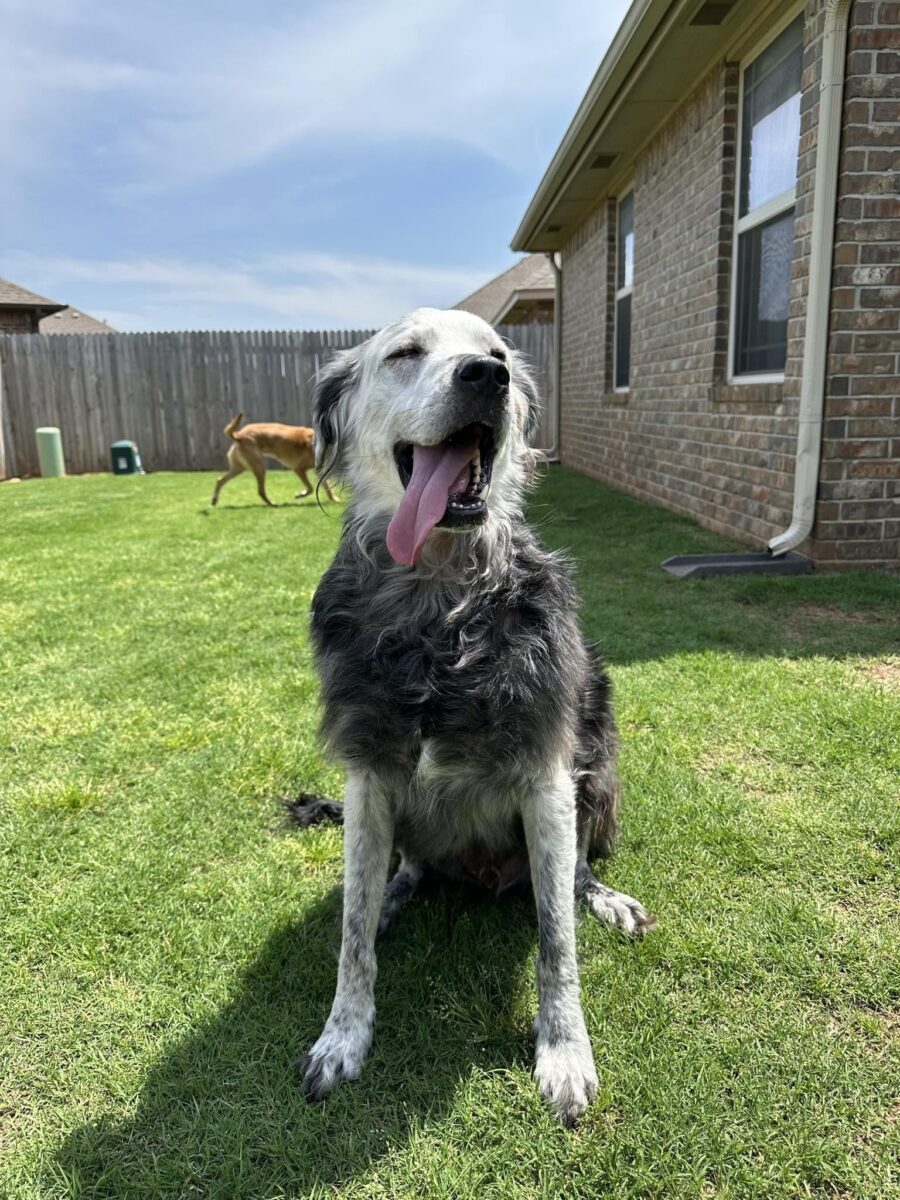
“He would lose his black fur and new white fur would come in. So there was a point in time where he was balding in areas until his fresh fluffy white fur grew in,” Buster’s hooman stated in a Reddit post.
Now, this incredibly handsome pup shows off his flawless coat without a single bland patch in sight. His entire body is covered in luxuriously fluffy white fur. And, he looks incredible.
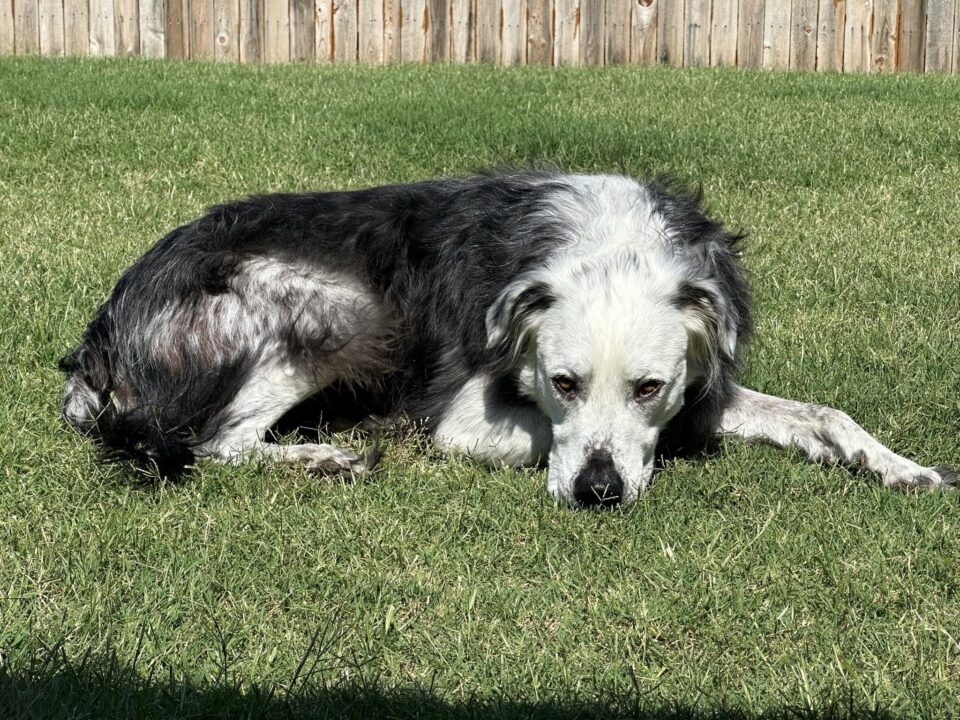
But, no matter whether his body is covered in black, white, or even blue hues, one thing is for sure: this pupper can effortlessly rock any color with style and flair.
Pups And Vitiligo
If you are wondering what lies behind Buster’s extraordinary transformation, it is all thanks to a rare medical phenomenon called vitiligo.
Vitiligo is a medical condition that causes patches of skin, or in this case, fur, to lose their pigment, and thus, become white. This is all because the cells that usually produce pigment, melanocytes, stop doing so.
It can affect both hoomans and doggos, typically resulting in the loss of coloration around the nose, mouth, and eyes.
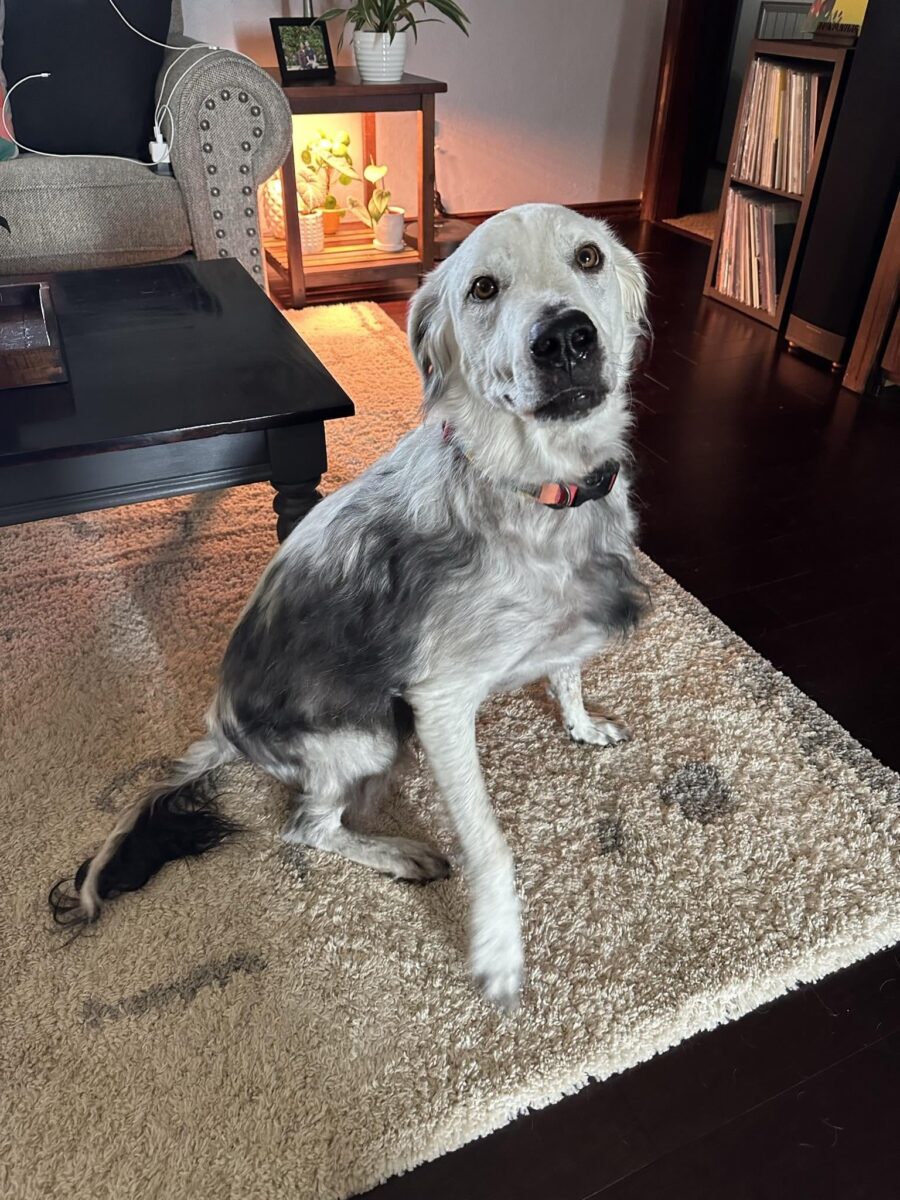
Such a condition is purely cosmetic and genetic, and it causes absolutely no harm or discomfort to the doggo. It can also occur in any breed out there; however, some are more predisposed to developing it, such as German Shepherds, Rottweilers, and Dachshunds.
While there’s typically no reason to panic, if you do happen to notice your furry friend developing these adorable white patches, it’s always a good idea to pay a visit to the vet for a checkup just to make sure there are no other underlying issues to be concerned about.
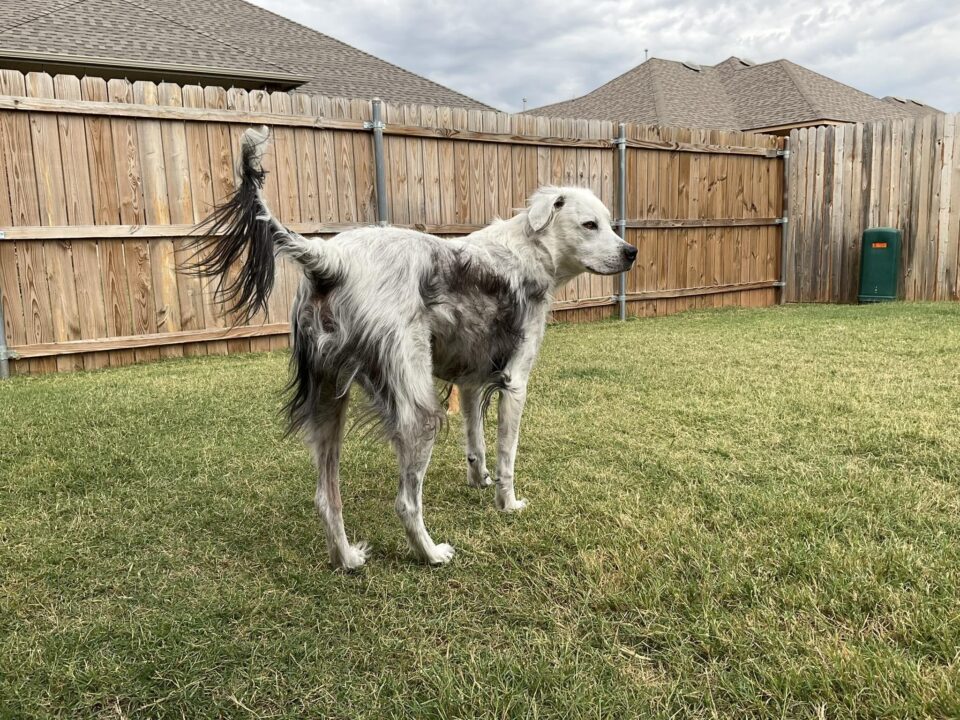
If you’ve ever noticed your furry companion scooting their bottom across the floor or excessively licking their back end, you might be wondering what’s causing this peculiar behavior. One common reason behind these actions is the filling up of your dog’s anal glands. These small sacs, located on either side of their anus, play a vital role in communication and marking territory.
When these anal glands become full, it can lead to discomfort and even potential health issues for your pup. As a seasoned dog trainer, understanding why dogs’ anal glands fill up is crucial for maintaining your pet’s well-being. In this article, we’ll shed light on the reasons behind this phenomenon and explore how you can help your furry friend stay happy and healthy.
Understanding Dog’s Anal Glands
The Anatomy of Anal Glands
Dog’s anal glands are small sacs located on either side of their anus. These glands contain secretions that dogs use for communication and marking territory. The glands are usually emptied when a dog defecates; however, sometimes they can get clogged or not empty properly, leading to issues.
The Function of Anal Glands in Dogs
Anal glands play a crucial role in a dog’s communication and scent identification. Dogs use the secretions to mark their territory and communicate with other dogs. When these glands become full, it can cause discomfort, leading to scooting or excessive licking. It’s essential to address full anal glands promptly to prevent potential health issues and keep your furry friend happy.
Common Reasons for Anal Glands Filling Up
Diet and Its Effects on Anal Glands
What your dog eats can affect the health of its anal glands. A diet low in fiber may lead to soft stools, making it harder for the glands to empty properly when your dog defecates. Ensure your furry friend’s diet includes enough fiber to support healthy bowel movements and prevent anal gland issues.
Obesity and Lack of Exercise
Obesity can contribute to anal gland problems in dogs. Excess weight can put pressure on the anal glands, making it difficult for them to empty naturally. Lack of exercise may also lead to sluggish bowel movements, exacerbating the issue. Keep your dog at a healthy weight and ensure they get regular exercise to help prevent anal gland complications.
Allergies and Sensitivities
Allergies and sensitivities can manifest in various ways in dogs, including anal gland issues. When your dog has allergies, they may experience inflammation or itchiness around the anal area, leading to excessive licking and irritation. Identifying and addressing your dog’s allergies can help alleviate discomfort and reduce the chances of anal gland complications.
Identifying the Signs of Full Anal Glands
Scooting and Licking
When your dog scoots across the floor or excessively licks their back end, it’s a clear sign that their anal glands may be full. This behavior is their way of trying to relieve the discomfort caused by the build-up of fluid in the glands. Pay attention to these actions as they can indicate an issue that needs to be addressed promptly.
Smelly Discharges
Another indication of full anal glands is a foul odor emanating from your dog’s rear end. If you notice a strong, distinctive smell, it could be a sign that the anal glands are full and need to be expressed. This smell is a result of the fluid in the glands becoming stagnant and causing the unpleasant odor.
Swelling Near the Anus
Swelling near your dog’s anus can also signal full anal glands. If you observe any unusual swelling or redness around their rear end, it’s essential to check for other signs of anal gland problems. Swelling in this area can be uncomfortable for your pet and should not be ignored.
These signs are crucial indicators that your dog may have full anal glands that need attention. Be sure to monitor your dog’s behavior closely and consult a veterinarian if you notice any of these symptoms to address the issue promptly and ensure your furry friend’s comfort and well-being.
Preventative Measures and Treatments
Proper Diet and Fiber Intake
To prevent your dog’s anal glands from filling up, ensure they have a balanced diet rich in fiber. Fiber helps promote healthy bowel movements and can aid in expressing the anal glands naturally. Include sources of fiber like pumpkin, sweet potatoes, or green beans in your dog’s meals to maintain optimal anal gland function.
Regular Exercise and Weight Management
Engage your dog in regular physical activities to help regulate their bowel movements and prevent anal gland issues. Exercise can also contribute to weight management, reducing the risk of obesity-related problems that might affect the anal glands. Keeping your dog at a healthy weight is essential for overall well-being and anal gland health.
Grooming and Manual Expression
Routine grooming practices can help prevent anal gland impaction. Regularly check your dog’s anal gland area for any signs of swelling, redness, or discomfort. If you notice any abnormalities, consult a professional groomer or veterinarian who can perform manual expression to empty the anal glands safely. Proper grooming maintenance can reduce the likelihood of anal gland problems.
Professional Care and Medical Interventions
When to See a Vet
If your furry friend continues to show signs of anal gland issues despite preventive measures, it’s time to consult a veterinarian. Persistent scooting, excessive licking, swelling, foul odor, or visible discomfort are all signals that veterinary attention is necessary. A professional can assess the glands and recommend appropriate treatment.
Possible Procedures and Surgeries
In severe cases where dietary adjustments and regular expressions are ineffective, your vet might suggest more advanced interventions. Procedures like expressing the glands under sedation or surgical removal of the glands could be options. These methods are typically reserved for chronic or recurrent problems that cannot be resolved through conservative approaches. Always follow your vet’s guidance when considering such procedures for your dog’s health.
Conclusion
So, there you have it – the scoop on why dogs’ anal glands fill up. Remember, keeping an eye on your furry friend’s behavior and addressing any signs of anal gland issues promptly can help maintain their comfort and health. By incorporating a balanced diet, regular exercise, and proper grooming practices into your pet care routine, you can reduce the risk of anal gland problems. And if your pup continues to show symptoms despite your best efforts, don’t hesitate to seek guidance from a veterinarian. Whether it’s through manual expression, medical treatments, or surgical interventions, your vet can provide the best course of action to keep your dog feeling their best. Your furry companion deserves the best care, so stay vigilant and proactive in managing their anal gland health.
Frequently Asked Questions
What are some signs that my dog may have anal gland issues?
Signs of anal gland issues in dogs include scooting, excessive licking of the back end, foul odor, swelling near the anus, and signs of discomfort or pain while sitting or defecating.
What factors can contribute to anal gland problems in dogs?
Factors contributing to anal gland problems in dogs can include diet lacking in fiber, obesity, lack of regular exercise, and poor grooming practices leading to impacted anal glands.
What are some preventive measures for anal gland issues in dogs?
Preventive measures for anal gland issues in dogs include feeding a balanced diet rich in fiber, ensuring regular exercise for bowel regulation and weight management, and opting for grooming practices like manual expression to prevent gland impaction.
When should I consult a veterinarian for my dog’s anal gland issues?
You should consult a veterinarian if your dog’s anal gland issues persist despite preventive measures, or if you notice signs of infection, pain, swelling, or recurrent problems with the anal glands.
What are the treatment options for severe anal gland problems in dogs?
Treatment options for severe anal gland problems in dogs may include procedures like expressing the glands under sedation or surgical removal in chronic or recurrent cases that do not respond to conservative approaches. Always follow your vet’s guidance for the best course of action.
[no_toc]

Hey there, I’m Janet Brooks, a dog-loving student from California. I’m all about helping pups in need, especially those without homes. Me and my awesome friends work together to give shelter and love to stray dogs. Oh, and I also write blogs about dogs to share helpful info.